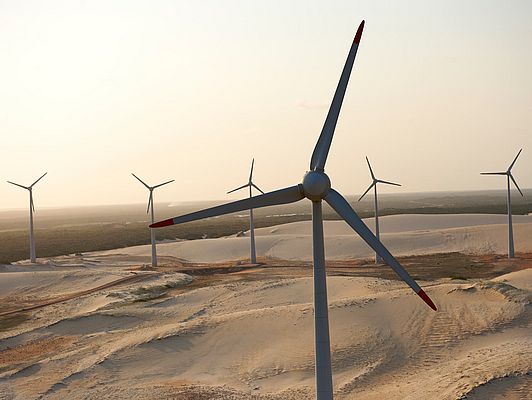As the science clearly shows, CO2 and other greenhouse gas (GHG) emissions must peak and begin to decline in less than a decade if we are to meet the target of staying below 2°C of global mean temperature rise - the target to which the 192 member governments of the United Nations Framework Convention on Climate Change (UNFCCC) have committed themselves.
As the new Intergovernmental Panel on Climate Change (IPCC) Report on climate impacts released in March this year clearly shows, anything more than 2°C, and human civilization as we know it (not to mention the rest of the biosphere) is in serious trouble.
So, the question about a 100 percent renewable energy future becomes not 'if?' but 'how?' - and most importantly, 'how quickly can we do it?' and 'how much will it cost?'. "It doesn't cost the world to save the planet", said IPCC Working Group III co-chair Ottmar Edenhofer when unveiling the 'Mitigation' portion of the IPCC Report in Berlin in April. Meeting stringent climate targets on the basis of what we know now will cost somewhere in the vicinity of 0.6 percent of annual GDP growth for the rest of the century - and that's not counting the lives that will be saved or much of the climate damage avoided; nor does it take into account the dramatic decrease in wind and solar prices in the last 2-3 years.
But surely renewables can't do it on their own? Today? No. Tomorrow? Why not?
While you will find no shortage of experts who will say that renewables cannot fully power our energy system, you see precious little analysis to back these statements up. One generally hears something like, 'what do you do when the sun doesn't shine or the wind doesn't blow?' - and then on to tout their favorite technology, whether it be nuclear, 'clean coal,' carbon capture and storage (CCS) or some other variation on the energy system that has gotten us into this mess in the first place.
They conveniently forget that hydro, biomass, solar-thermal, and geothermal are not as variable as are wind and solar PV. They forget that Brazil, Norway and New Zealand are nearly at a 100 percent renewable electricity supply, and that Denmark, Sweden and others are already moving in that direction.
They forget that with sufficient storage (pumped, compressed air, batteries, fuel cells), sufficient dispatchable renewables, and energy efficiency, energy conservation, smart grids and demand management systems, it is certainly technically feasible to power our economy completely on renewable energy, as various simulations in different parts of the world have shown.
Further, in the places with large RE penetration such as Denmark, you see a much greater role for electricity in the overall energy system, not only for transport but for heating as well. The fact is, a 100 percent renewable energy future is technically feasible. The question is whether it is politically feasible.
We really do only have a very limited time to act before climate impacts move from bad to catastrophic, taking decisions out of the hands of democratically elected governments and put first in the hands of the emergency services, and ultimately, the military.
Author: Steve Sawyer, Secretary General, Global Wind Energy Council (GWEC)


























































